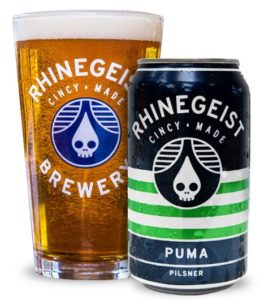Top 10 International Pilsners Beer Brewed in World
This Top Ten List of International Pilsners is from the results of the U.S. Open Beer Championship, Great American Beer Festival, and World Beer Cup.International Pilseners are straw to pale. These beers are often brewed with rice, corn, wheat, or other grain or sugar adjuncts making up part of the mash. Residual malt aroma is very low and does not predominate but may be perceived. Hop aroma is low. Residual malt sweetness is very low and does not predominate but may be perceived. Hop flavor is low. Hop bitterness is low to medium. The body is light to medium. ABV: 4.60% – 5.30%. IBU: 17 – 30

1. Puma – Rhinegeist Brewing – Ohio
2. Rocket 100 – The Austin Beer Garden Brewing – Texas
3. Riverwalk Empire – River Dog Brewing – South Carolina
4. Sesión Cerveza – Full Sail Brewing – Oregon
5. Paycheck – Fullsteam Brewery – North Carolina
6. BEER – La Cumbre Brewing – New Mexico
7. Amend This! – TAPS Fish House & Brewery – California
8. Wonderstuff Bauhaus Brew Labs – Minnesota
9. Lemon Pils – Elk Horn Brewery – Oregon
10. Estarell Damm – S.A. Damm – Spain
History of International Pilsners
The pilsner, a pale lager characterized by its crisp, clean taste and golden hue, originated in 1842 in the Bohemian city of Pilsen (now in the Czech Republic). Brewer Josef Groll, tasked with improving the quality of local beer, combined Bavarian lagering techniques with local Saaz hops, soft water, and pale malts to create a revolutionary beer at the Bürgerliches Brauhaus. This beer, named Pilsner Urquell (“original source”), was the first of its kind, showcasing a clarity and refreshing bitterness that contrasted with the darker, cloudier beers of the era. Its popularity spread rapidly across Europe, aided by advancements in refrigeration and glassmaking, which allowed for consistent brewing and appreciation of its visual appeal. By the late 19th century, pilsner had become a global sensation, inspiring brewers in Germany, Denmark, and beyond to craft their own versions, often adapting the style to local tastes and ingredients.
As pilsner spread internationally, it evolved into distinct regional variations while maintaining its core characteristics of balance and clarity. In Germany, brewers like those at Bitburger and Warsteiner refined the style, emphasizing a drier, more hop-forward profile that became known as German Pils. In the Netherlands, brands like Heineken adapted the pilsner to a lighter, more approachable version, contributing to its global dominance in the 20th century. Meanwhile, in the United States, the style was initially overshadowed by mass-produced lagers but saw a revival with craft breweries like Victory Brewing and Firestone Walker, which introduced hoppier, more artisanal takes. Today, pilsner remains a cornerstone of global beer culture, with countries from Japan (Sapporo) to Mexico (Corona) producing their own interpretations, each reflecting local brewing traditions while paying homage to Groll’s original creation.
Top 10 Beers in America – Ales Lagers Specialty Barrel Aged